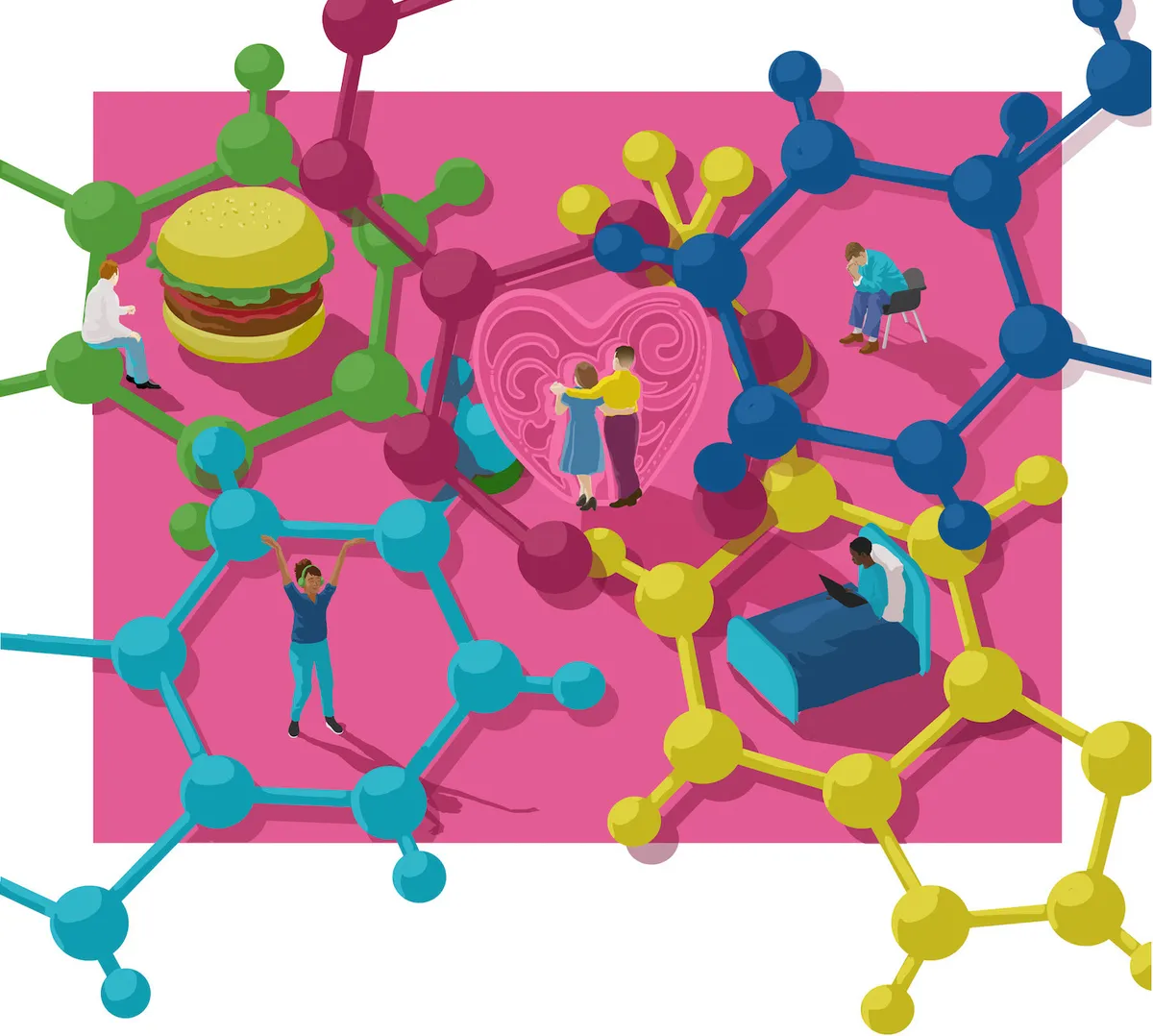The hormones—insulin, ghrelin, human growth hormone (HGH), cortisol, leptin, adrenaline, noradrenaline, and hormone-sensitive lipase (HSL)—play key roles in regulating energy balance, metabolism, and physiological responses to stress. Here's how they interact and balance each other:
1. Insulin
- Role: Insulin is secreted by the pancreas in response to elevated blood glucose levels, promoting the uptake of glucose into cells, particularly muscle and fat cells, for storage or energy use.
- Balance: Insulin lowers blood glucose levels and counteracts the effects of hormones that increase blood glucose, such as cortisol, adrenaline, and noradrenaline. It also inhibits hormone-sensitive lipase (HSL), reducing the breakdown of fat.
2. Ghrelin
- Role: Ghrelin, known as the "hunger hormone," is produced by the stomach and signals the brain to stimulate appetite, especially when the body is in a state of energy deficit.
- Balance: Ghrelin levels rise before meals and fall after eating. It opposes the effects of leptin, which suppresses appetite. Ghrelin can also modulate insulin secretion and influence energy balance indirectly.
3. Human Growth Hormone (HGH)
- Role: HGH, secreted by the pituitary gland, promotes growth, cell repair, and metabolism. It stimulates the breakdown of fat (lipolysis) and has a role in maintaining blood glucose levels by reducing insulin sensitivity.
- Balance: HGH opposes the action of insulin by increasing blood glucose levels and enhancing the activity of HSL, which leads to increased fat breakdown. It works synergistically with cortisol to increase blood glucose.
4. Cortisol
- Role: Cortisol, the "stress hormone," is produced by the adrenal glands and plays a crucial role in the body's response to stress, including increasing blood glucose levels and mobilizing energy reserves.
- Balance: Cortisol increases blood glucose by stimulating gluconeogenesis in the liver and inhibiting insulin's action. It also activates HSL, promoting fat breakdown. Its actions are balanced by insulin, which lowers blood glucose and inhibits HSL.
5. Leptin
- Role: Leptin is produced by fat cells (adipocytes) and signals the brain to suppress appetite when energy stores are sufficient. It helps regulate energy balance by inhibiting hunger.
- Balance: Leptin counters the effects of ghrelin by reducing appetite. High leptin levels generally decrease food intake and increase energy expenditure, while low levels (as seen in starvation) increase appetite.
6. Adrenaline and Noradrenaline (Epinephrine and Norepinephrine)
- Role: These catecholamines are produced by the adrenal glands in response to stress or low blood glucose. They prepare the body for a "fight or flight" response by increasing heart rate, blood pressure, and blood glucose levels.
- Balance: Adrenaline and noradrenaline increase blood glucose by stimulating glycogen breakdown and inhibiting insulin. They also activate HSL, promoting fat breakdown. Their effects are countered by insulin, which restores normal glucose levels and inhibits HSL.
7. Hormone-Sensitive Lipase (HSL)
- Role: HSL is an enzyme that breaks down stored triglycerides into free fatty acids and glycerol, providing energy during periods of fasting, exercise, or stress.
- Balance: HSL activity is stimulated by hormones like cortisol, HGH, adrenaline, and noradrenaline, leading to increased fat breakdown. Insulin inhibits HSL, reducing fat breakdown and promoting fat storage.
Summary of Balances
- Insulin vs. Cortisol, Adrenaline, Noradrenaline, HGH: Insulin lowers blood glucose and promotes fat storage, opposing the actions of cortisol, adrenaline, noradrenaline, and HGH, which increase blood glucose and promote fat breakdown.
- Ghrelin vs. Leptin: Ghrelin stimulates appetite, while leptin suppresses it. These hormones balance energy intake and expenditure.
- HSL vs. Insulin: HSL promotes fat breakdown, while insulin inhibits this process.
These hormones interact in a complex, dynamic system that ensures energy availability, regulates metabolism, and adapts to changing physiological demands. Their balance is critical for maintaining homeostasis and responding appropriately to different situations, such as stress, fasting, and feeding.

Comments
Post a Comment